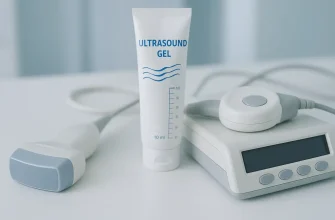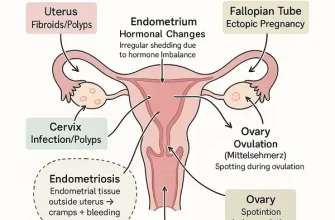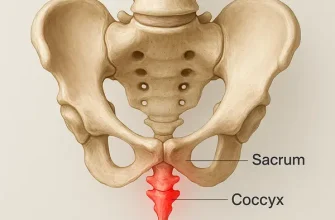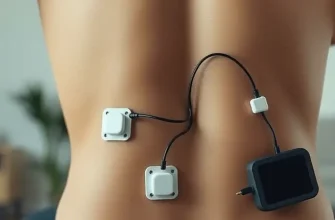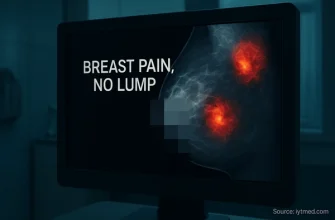Postpartum pain is a common part of the recovery process after childbirth. Whether a woman delivers vaginally or via cesarean section, her body undergoes significant changes and trauma that lead to discomfort, soreness, and sometimes sharp or persistent pain. According to the CDC, about 90% of women report some form of pain after childbirth, with nearly 1 in 10 experiencing severe pain that interferes with daily life.
Duration of Postpartum Pain by Area (Average in Weeks)
This chart shows the average duration of postpartum pain by specific body area. C-section incision pain lasts the longest at 8 weeks, while abdominal and breast pain typically resolve in about 2 weeks. The visualization helps highlight which areas may need extended care and attention after childbirth.
Types of Pain After Birth
Pain after birth can manifest in several ways, and understanding the source helps with appropriate management. Below is a detailed overview of each type, what it feels like, associated symptoms, when to be concerned, and how serious it typically is on a 10-point pain concern scale (10 being urgent and needing immediate medical attention).
- Perineal Pain
Description: Caused by tissue stretching, tearing, or surgical incision (episiotomy) during vaginal delivery. Feels like soreness, burning, or bruising between the vagina and anus. Associated Symptoms: Swelling, discomfort while sitting, light bleeding, occasional itch during healing. Severity Rating: 3/10 (normal healing); 7/10 if pain increases, becomes asymmetric, or is accompanied by swelling—possible hematoma. When to Worry: If pain worsens after 3–5 days, or if sitting becomes impossible. - Uterine Cramping (Afterpains)
Description: As the uterus contracts back to its pre-pregnancy size, cramps occur, often more intense with subsequent births or while breastfeeding. Associated Symptoms: Cramping during nursing, mild abdominal soreness, light bleeding. Severity Rating: 2/10 (expected and short-term); 6/10 if cramps are persistent beyond 7 days or cause nausea and fever. When to Worry: If pain is severe, prolonged, or paired with heavy bleeding or fever. - Incision Pain (C-section)
Description: Soreness or sharp pain at the surgical site. Common in the first weeks after a cesarean section. Associated Symptoms: Redness, swelling, pulling sensation while moving, difficulty standing upright. Severity Rating: 4/10 (normal healing); 8/10 if incision is red, oozing, or fever develops—could indicate infection. When to Worry: Increased pain or pus at incision after initial improvement. - Breast and Nipple Pain
Description: Soreness during breastfeeding is normal initially but should improve with time. Pain can become sharp or burning with poor latch or infections. Associated Symptoms: Cracked nipples, clogged ducts, redness, swelling. Severity Rating: 3/10 for latch pain; 7/10 if associated with fever and breast hardness—possible mastitis. When to Worry: If pain worsens, nipples crack or bleed, or fever/chills develop. - Back and Joint Pain
Description: Result of pregnancy posture changes, hormone relaxin, and birth positioning. Also common after epidural anesthesia. Associated Symptoms: Lumbar ache, joint stiffness, radiating pain to legs. Severity Rating: 3/10 (temporary); 7/10 if pain radiates or limits mobility, especially beyond 6 weeks. When to Worry: Numbness, sciatica symptoms, or no improvement after 4–6 weeks.
Real Medical Cases in the U.S.
Case 1: Spinal Inflammation Post-Epidural
A 28-year-old mother from Austin, Texas, experienced persistent lower back pain beginning three days after an uncomplicated vaginal birth with epidural anesthesia. The pain, which intensified when sitting or lifting her baby, lasted over six weeks. She sought help from her OB-GYN, who referred her to a neurologist. An MRI revealed localized inflammation at the epidural site. She was prescribed oral steroids and physical therapy. Pain subsided completely by week 10 postpartum.
Case 2: Undiagnosed Perineal Hematoma
A 35-year-old woman in San Diego, California, reported severe perineal pain and visible swelling four days after a vaginal birth with a second-degree tear. Though she was initially told it was normal healing, the pain worsened, and she couldn’t sit comfortably. A midwife noticed asymmetric swelling and referred her to an urgent care clinic. Ultrasound revealed a hematoma that required surgical drainage. After treatment, her pain diminished significantly within five days.
Case 3: Uterine Infection Misdiagnosed as Flu
A 30-year-old new mom from Chicago developed a mild fever (100.7°F / 38.2°C), chills, and fatigue five days after delivery. Initially treated with fluids and Tylenol at home, her condition worsened—fever spiked to 102°F, and she experienced abdominal tenderness. She visited the ER, where lab tests and ultrasound confirmed endometritis. She was admitted for IV antibiotics. Within 48 hours, her fever broke, and she was discharged on oral antibiotics.
Case 4: Persistent Breast Pain from Improper Latch
A 25-year-old mother in Miami, Florida, experienced intense nipple pain and cracking during breastfeeding. At first, she assumed it was part of adjusting to nursing. By the end of the first week, the pain became unbearable, and she developed a clogged duct. She consulted a lactation consultant certified by the IBLCE. After adjusting her baby’s latch and using lanolin cream and warm compresses, pain significantly decreased within three days.

Case 5: Postpartum Sciatica Due to Nerve Compression
A 33-year-old woman from Denver, Colorado, began feeling sharp, shooting pain down her left leg ten days after a cesarean birth. Initially thought to be routine back pain, the discomfort worsened, affecting her ability to walk. An MRI revealed sciatic nerve compression related to positioning during surgery. She received targeted physiotherapy and anti-inflammatory medication. After six sessions, mobility and pain levels improved dramatically.
When Is It a Red Flag?
Some pain is expected, but new moms should watch for warning signs that may indicate infection, clotting disorders, or organ complications:
- High fever (over 100.4°F / 38°C) lasting more than 24 hours, especially when paired with chills, malaise, or abdominal pain, could signal a uterine infection (endometritis) or another systemic infection. A single elevated reading isn’t always urgent—but if it persists or recurs, it’s time to act.
- Foul-smelling vaginal discharge in combination with pelvic pain and fever may point to a retained placenta or bacterial infection.
- Severe headache or blurred vision, when persistent and accompanied by high blood pressure, could be signs of postpartum preeclampsia—a serious and potentially life-threatening condition.
- Leg swelling (usually one-sided), warmth, or redness, especially when combined with sharp chest pain or shortness of breath, may indicate a deep vein thrombosis (DVT) or pulmonary embolism (PE). This combination requires immediate emergency care.
- Pain that worsens instead of improves, particularly if it spreads, becomes sharp, or is unresponsive to medication, often suggests something beyond standard recovery. Chronic, escalating pain beyond 10–14 days postpartum is worth investigating.
The pattern, duration, and combination of symptoms are key. One symptom alone may be manageable, but when multiple red flags appear together—or when one symptom persists beyond normal recovery—it often reflects a deeper issue that requires prompt medical attention.
Diagnostics: Identifying Serious Complications
Modern diagnostics are crucial in differentiating normal postpartum pain from complications:
| Diagnostic Test | Purpose | Accuracy (1-10) | Average Cost (USD) |
|---|---|---|---|
| Ultrasound | Detects retained placenta, hematomas | 9 | $200 – $500 |
| MRI | Assesses spinal, muscular, or nerve injuries | 10 | $1,000 – $3,000 |
| Blood Test (CBC, CRP) | Identifies infections or internal inflammation | 8 | $100 – $250 |
| Urinalysis | Detects urinary tract infections | 8 | $30 – $80 |
Treatment and Pain Relief Options
Modern medicine offers a range of targeted treatments for postpartum pain, many of which are supported by reputable U.S.-based brands and healthcare providers.
Use of Non-Medication Pain Relief Methods
| Method | Usage (%) |
|---|---|
| Warm baths/sitz baths | 55% |
| Ice packs | 45% |
| Pelvic floor exercises | 30% |
| Postpartum support belts | 20% |
| Aromatherapy/essential oils | 10% |
This chart displays the popularity of various non-medication methods for postpartum pain relief. Warm baths are the most commonly used approach, while aromatherapy and support belts are less frequently adopted.
Pain Medications
Non-steroidal anti-inflammatory drugs (NSAIDs) like ibuprofen (Advil®, Motrin®) and acetaminophen (Tylenol®) are typically the first-line treatments. These drugs reduce inflammation and ease general discomfort. They are widely available over the counter, with typical costs between $5–$20 per bottle. For more severe cases, doctors may prescribe short-term opioids, such as oxycodone or hydrocodone-acetaminophen (Vicodin®). However, these are prescribed cautiously due to their potential for dependency.
Effectiveness: 7–9 out of 10, depending on the severity.
Most Common Medications Used for Postpartum Pain Relief
This chart highlights the most commonly used medications for postpartum pain relief. Over-the-counter options like Ibuprofen and Acetaminophen are used by the majority, while prescription opioids are significantly less common. The data helps in understanding preferred pain management strategies after childbirth.
Topical Treatments
Topical relief is popular for perineal pain. Lidocaine sprays (e.g., Dermoplast®) and witch hazel pads (like Tucks®) provide soothing, localized numbing. Lidocaine offers immediate relief within minutes and lasts for up to two hours.
Effectiveness: 6–8 out of 10
Cost: $6–$15 per product
High-Tech Therapies
U.S. hospitals and postpartum recovery centers increasingly use cold therapy devices, such as PeriCool® and Frida Mom Instant Ice Maxi Pads, to reduce swelling and numb pain after vaginal delivery. Additionally, low-level laser therapy (LLLT) is gaining popularity in pelvic recovery clinics for reducing inflammation and promoting tissue repair.
Effectiveness: 8–9 out of 10
Cost: $20–$60 for home devices; $100–$300 per clinical session for LLLT
Physical Therapy
Postpartum physical therapy addresses musculoskeletal pain, pelvic floor dysfunction, and C-section recovery. Certified physical therapists use manual therapy, targeted exercises, and sometimes electrical stimulation devices like TENS units to improve mobility and reduce discomfort.
Top clinics in the U.S. include Origin, Maven Clinic, and Therapydia.
Effectiveness: 9 out of 10
Cost: $120–$200 per session (may vary based on region)
Lactation Consultants
Professional lactation consultants, often certified by the International Board of Lactation Consultant Examiners (IBLCE), help alleviate nipple pain through assessment, latch correction, and the use of nipple shields or healing ointments like Medela® Tender Care or Earth Mama® Nipple Butter.
Effectiveness: 8 out of 10
Cost: $100–$250 per session
Each of these options offers a specific solution tailored to the cause and intensity of pain. Most importantly, a combined approach often yields the best results for postpartum recovery.
Recovery Timeline: What to Expect
Recovery after childbirth isn’t a one-size-fits-all situation. Each type of postpartum pain heals on a different timeline, and knowing what progress looks like can be both reassuring and empowering.
A good healing trend is when pain gradually becomes less intense, mobility increases, and day-to-day activities become easier without worsening symptoms. It’s also a positive sign if pain responds well to simple interventions like rest, medication, or physical therapy.
Here’s what typical healing may feel like week by week:
- Perineal Pain (1–6 weeks): The area may initially feel swollen and tender. A decrease in swelling and a return to more comfortable sitting and walking within the first two weeks are signs of normal healing. By week 4, light pressure should feel less irritating, and itchiness may replace soreness—a signal that tissues are regenerating.
- Uterine Cramps (3–7 days): These feel like strong menstrual cramps, especially during breastfeeding. A good sign is that they become shorter and milder each day. If cramps vanish within a week and there’s no heavy bleeding, that’s typical.
- Cesarean Pain (Up to 8 weeks): Expect soreness and limited movement early on. A healthy trend includes being able to sit up and walk short distances within a few days, with pain steadily decreasing. By weeks 4–6, lifting light objects and walking without support should be manageable.
- Breast/Nipple Pain (1–2 weeks): Initial soreness from latching may fade as breastfeeding techniques improve. Nipple pain should decrease daily with better latch and use of nipple balm. If pain transitions from sharp to mild sensitivity, it’s on the right track.
- Back Pain (6–12 weeks): Common in the lumbar region, especially after epidural. Pain should shift from constant to occasional with stretching and exercise. A good indicator of healing is being able to stand or sit longer each day without stiffness.
In general, any increase in pain, new symptoms, or plateauing of improvement after the expected recovery window is a signal to consult a provider.
Editorial Advice
Reyus Mammadli, healthcare advisor, recommends that new mothers listen to their bodies and never hesitate to bring up pain concerns with their doctor, even if they seem minor. “Postpartum care is often under-prioritized. Pain that persists or worsens is not just part of the ‘mom experience.’ It’s a sign to pause and seek help,” Mammadli notes. He also suggests setting up a post-birth care checklist with a healthcare provider to monitor recovery.
Simple practices like rest, hydration, and avoiding heavy lifting can accelerate healing. Don’t brush off pain as “just part of it.” Your health matters, mama.
References
- Centers for Disease Control and Prevention (CDC). “Postpartum Pain Management.” Last reviewed 2022. Available at: https://www.cdc.gov/reproductivehealth/maternalinfanthealth
- American College of Obstetricians and Gynecologists (ACOG). “Postpartum Pain Relief: Patient Education.” Practice Bulletin No. 219. January 2021. Available at: https://www.acog.org
- Mayo Clinic. “Postpartum Recovery: What to Expect After Vaginal Delivery.” Updated 2023. Available at: https://www.mayoclinic.org
- Johns Hopkins Medicine. “Cesarean Section Recovery and Pain Management.” Reviewed 2023. Available at: https://www.hopkinsmedicine.org
- National Institutes of Health (NIH). “Postpartum Uterine Involution and Afterpains.” National Library of Medicine. PubMed ID: 34310219.
- La Leche League International (LLLI). “Breastfeeding Pain: Causes and Solutions.” Updated 2022. Available at: https://www.llli.org
- Cochrane Database of Systematic Reviews. “Pharmacological and Non-Pharmacological Interventions for Postpartum Pain Relief.” 2020 Review Summary. DOI: 10.1002/14651858.CD007705.pub3
- U.S. National Library of Medicine (MedlinePlus). “Postpartum Infections and Recovery.” Updated 2023. Available at: https://medlineplus.gov
- International Board of Lactation Consultant Examiners (IBLCE). “What Is a Lactation Consultant?” Credential Overview. Available at: https://iblce.org
- Origin Physical Therapy & Pelvic Health Clinics. “Postpartum Physical Therapy in Practice.” Updated 2023. Available at: https://www.theoriginway.com


